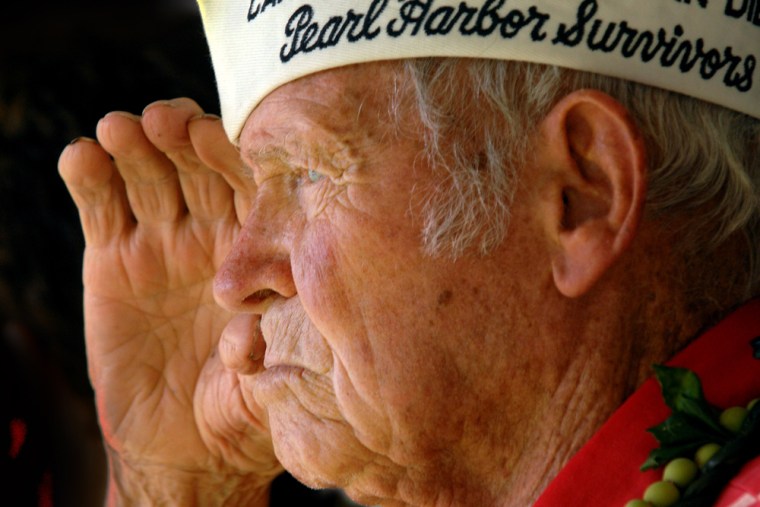The Medal of Honor, the nation’s highest military award, was the brainchild of Abraham Lincoln, who sought to recognize exceptional bravery during the Civil War. At the time, the only battlefield distinction was the Purple Heart, awarded in those days for meritorious service, not as it is today, for wounds received in combat.
Since then, about 3,500 Medals of Honor have been awarded. In more recent times, since World War I, most have been posthumous, and there has been no living recipient for any conflict since Vietnam. Today, there are only 110 living recipients, and many of them will be on the Yorktown on Wednesday for the grand opening of the Medal of Honor Museum in South Carolina.
Among them are the oldest living recipient, John Finn, who will be 98 this July and was decorated for action on Pearl Harbor Day. He enlisted in the Navy in 1926 and can transfix the most jaded audience with first-person descriptions of life in America before World War I and tales of his participation in American naval operations in China a decade before the Second World War.
The museum is the principal repository for artifacts relating to the Medal of Honor, but the real thrust of the place is not just the display of things but also the perpetuation of the concept of selfless service to country and comrades. There is an emotion generated there that can be duplicated nowhere else, and one reason is the actions of people. Try these:
Jack Lucas
Jack Lucas was a bit bigger than other kids his age and spent some time at a military prep school. So, when World War II began, he successfully lied about his age and enlisted in the Marines Corps when he was 13 years old. He was so good in boot camp that he was made an instructor, at 14. Not content to serve in the States while his buddies were in combat, he got himself aboard a ship bound for the South Pacific. Landing on Iwo Jima, Lucas saved his fellow Marines by throwing himself on two hand grenades. He miraculously survived devastating injuries, and when he received the Medal from President Harry Truman, Lucas was the youngest recipient since the Civil War.
George Sakato
In danger of being sent to an internment camp like other Japanese-American families, George Sakato moved to Arizona and tried to enlist after Pearl Harbor, but he was rejected as an undesirable alien. In 1943, the government wised up and allowed Sakato and thousands of other patriotic Americans of Japanese descent to fight, and he became a member of the legendary 442nd Regimental Combat Team. In eastern France, in difficult, mountainous terrain, he singlehandedly attacked a German strong point and then, only a 22-year-old private, led his squad through ferocious enemy fire to capture dozens of German soldiers.
Jim Stockdale
After being shot down and injured over North Vietnam, Jim Stockdale was a prisoner for eight long years, and for three of those years he was in solitary confinement. By any standard, the treatment he received was criminal and inhumane: beaten, tortured, strangled until he was nearly asphyxiated. He was brought to the brink of death and resuscitated, time and time again, year after year.
But he never gave any more than his name, rank and service number.
He had told his fellow prisoners that they were honor-bound to resist, and he led by example. Rather than let himself be used by the North Vietnamese in a propaganda film, Stockdale beat his own face to a bloody pulp and cut himself with a dull razor so that he could not be presented on film.
They threw him in solitary again, and he feared that he would ultimately break under the torture and cooperate. So he shattered the window of his cell and slit his wrists with the glass. He was found before he bled to death, but the torture stopped because the guards realized that Stockdale would rather die with honor than serve their purposes.
Clarence Sasser
In 1967, Clarence Sasser was a medic in the Mekong River delta of Vietnam. Under continuous and intense enemy fire, and without regard to his own safety, he crawled from soldier to soldier to aid the injured. He ignored his own many painful shrapnel and bullet wounds to save others and did not cease his assistance until loss of blood made him incapable of continuing.
The behavior of these gallant people was extraordinary, but the basic underpinnings of it are not. American service members are imbued with a code that transcends background, race and every other demographic distinction: don’t surrender if you can fight, never cooperate with your captors, accomplish the mission at all cost, love your comrades.
And so it’s not surprising that every recipient of the Medal of Honor will tell you that he wears it not for himself but for those who can’t: all the men and women who sacrificed so that we can live in freedom. It’s something worth remembering each time we have a chance to help our neighbors and instead turn the other way.
Jack Jacobs is an MSNBC military analyst. He is a retired U.S. Army colonel. He earned the Medal of Honor for exceptional heroism on the battlefields of Vietnam and also holds three Bronze Stars and two Silver Stars.
